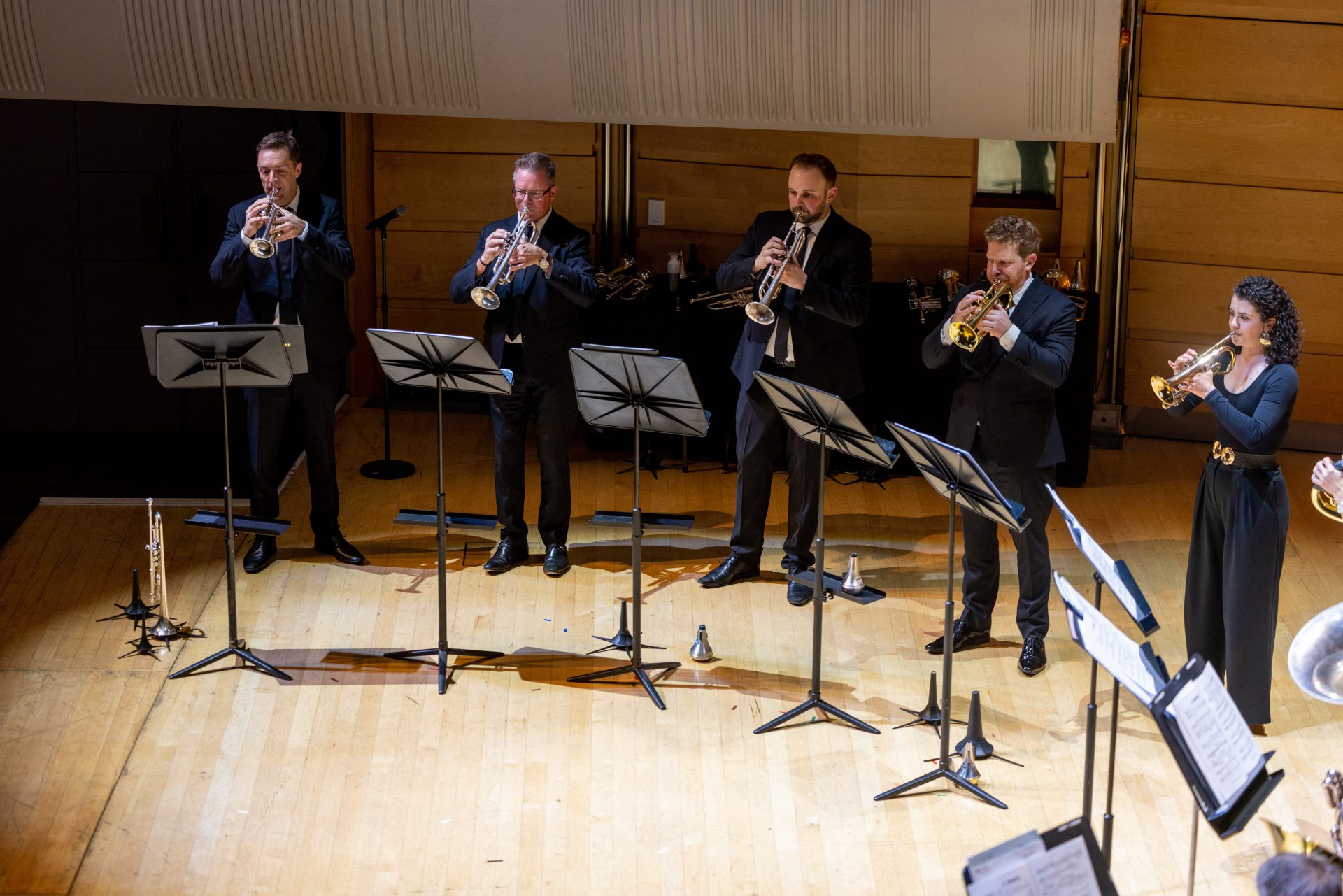It is not often that Sydney audiences get the opportunity to hear a brass ensemble. Let alone a brass ensemble drawn from one of the best symphony orchestras in the world.
This program featured music from the Renaissance to the 20th century, with some Baroque for good measure.
First was an arrangement for brass of Borodin’s ‘Polovtsian Dances’ which feature as an exotic scene in Act II of Borodin’s opera Prince Igor. None of the elegance of the chorus and voice-like clarinet is lost in this arrangement, which owes much to the expressiveness of each member of the ensemble. Such is the variety of the dances that they, at once, lull and invigorate the audience. One can almost envisage the decadence of the Art Nouveau staging for the opera.
Andresen’s Three Norwegian Dances was a tour de force in the expressive range of brass instruments and of the stylistics variety that a brass ensemble is capable of pulling off. For the Prelude and Reinlendere, the ensemble made spontaneous and percussive use of feet to set the beat for the next episode in what was, at all times, a kaleidoscope of musical colours. The Trønderpols opens with a harmonic sequence that is surprisingly Iberian in style and redolent of a fandango. Ronald Prussing on trombone gave a delightful vibrato effect in parts. The beginning of the third dance, Per Spellman, almost seems to hark back to the style of the fanfares or fantasias of the Renaissance period.
And what a segway into the next piece, Juan del Encina’s Tres Villancicos. Unsurprisingly, this was not uncharted territory, for it is very much in the province of such early music doyens as Jordi Savall. But this was a very special arrangement for brass ensemble by Scott Kinmont – a member of the ensemble. And what a tasteful arrangement. The composition is programmatic, depicting the composer’s ruminations, variously, on seclusion, love and fortune. In the first, Más vale troca, the percussive element of this style of music is brought out fully, and the second, Hermitaño, features whimsical changes in mood and sudden tremolos and hyper-vibrato – a technique in early music to imitate the human voice or depict anguish. That theme is continued in the Amor con fortuna, which tosses itself into a frenzy before an abrupt ending.
We return to the soundworld of the 20th century with Piazzolla’s Maria de Buenos Aires suite, arranged by Stephen Verhelst. It is arranged from a ‘tango opera’ and one can glean hints of an aria in the song-like melodies on trumpet, which were performed spectacularly by David Elton and Brent Grapes. The suite then bursts out into a dense fugue with a very fast-paced theme, before the melody from the first movement is reintroduced in the plaintive final movement.
The concert closed, fittingly, with selections from Handel’s Music for the Royal Fireworks HWV 351. The distinctive effect given by the wash of syncopated strings is often thought to be the hallmark of the French overture, but none of this was lost in the arrangement for brass. The motif, something of a persistent hunting call, was performed with great dynamic control by the trumpets. After a galant Bourrée came a couple of menuets, both of which were true to their origins in dance. The La Rejouissance, a proven crowd-pleaser, was a spectacular way to end.
